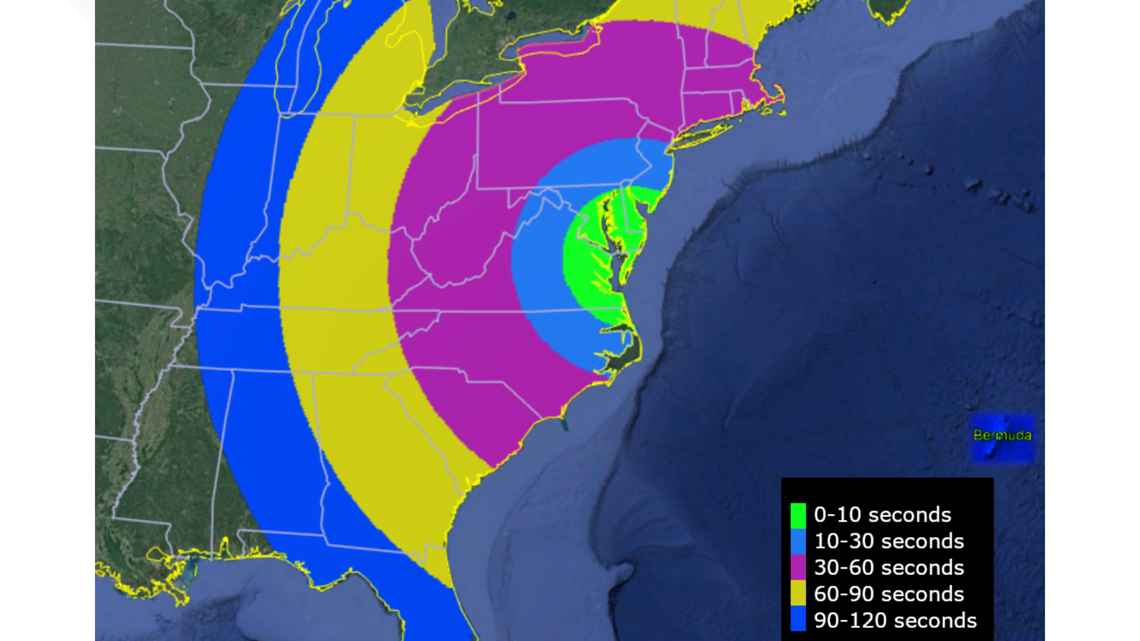WALLOPS ISLAND, Va. — A rocket launch from a NASA facility in Virginia may be visible as far as the Mississippi River.
The launch is set for Saturday evening, May 8 at the earliest, according to a statement from NASA's Wallops Flight Facility in Wallops Island, Virginia. The launch is set for 7:02 p.m. Central time at the earliest. Backup launch days are set to run through May 16.
"The launch may be visible, weather permitting, in much of the eastern United States from the Atlantic coast to the Mississippi River," read the statement.
A map from the US Department of State Geographer shows where the rocket, which is a four-stage Black Brant XII, may be visible within the United States. It details when and where people might be able to see the rocket after it launches.
A curved blue bar on the map shows that the furthest visibility extends toward western Illinois. People in this section may be able to see the rocket between 90 and 120 seconds after launch. The section in green, which is the area directly surrounding the launch spot, will be first to see the launch, potentially catching a glimpse within the first 10 seconds.


This mission is called the "KiNETic-scale energy and momentum transport eXperiment, or KiNet-X."
The goal of the mission is to research what NASA calls "a very fundamental problem in space plasmas," hoping to help answer the question: "How are energy and momentum transported between different regions of space that are magnetically connected?"
The rocket launch itself will release barium vapor and is expected to make two green-violet clouds that should last around 30 seconds. However, due to the late-in-the-day launch, people in the area may not be able to see this clearly.
Keep up on launch updates by following the NASA Wallops Twitter account.
When the time for launch comes, live coverage will be available here.

